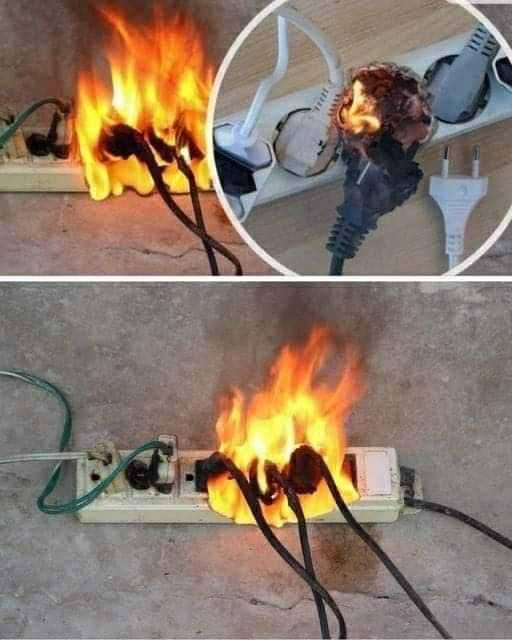
Imagine life before electricity—a time when our grandparents and parents managed with simple tools and no modern gadgets. Fast forward to today, and nearly everything we use depends on a steady flow of electricity, from kitchen appliances to the smallest devices in our pockets. This electrical revolution has reshaped how we live, work, and connect.
But despite all this technology, most homes weren’t originally built with enough outlets to keep up. Enter the power strip: a convenient, lifesaving gadget that turns one wall socket into multiple plugs. It’s perfect for charging phones, powering lamps, or connecting low-energy electronics.
However, not all devices belong on a power strip. Using the wrong appliances can cause overheating, damage, or even start a fire. Here’s a rundown of 9 things you should never plug into a power strip—and the risks involved.
1️⃣ Ovens
Ovens demand huge amounts of electricity to heat and cook food. Their powerful heating elements need dedicated circuits. Plugging an oven into a power strip can cause overheating, melted wires, or a dangerous fire.
2️⃣ Refrigerators
Though they don’t run continuously, refrigerators cycle power frequently to keep food cold. This fluctuating demand needs a stable power source. Power strips can cause voltage drops that harm your fridge’s compressor, risking costly repairs.
3️⃣ Washing Machines
Washing machines pull heavy power—often up to 1,400 watts—over long cycles. A power strip can’t handle this load safely and may overheat or fail, creating a fire hazard.
4️⃣ Space Heaters
Space heaters commonly run at 1,500 watts or more, often for hours on end. Connecting them to a power strip can overload the strip and spark a fire.
5️⃣ Microwaves
Microwaves, like ovens, use intense bursts of electricity. They require a direct wall outlet to avoid overloading circuits and the risk of electrical fires.
6️⃣ Coffee Makers & 7️⃣ Toasters
These everyday kitchen essentials seem small, but their heating elements cause sudden power surges. Power strips aren’t designed to handle these spikes, which can lead to overheating or damage.
8️⃣ Daisy Chaining Power Strips
Plugging one power strip into another—known as daisy chaining—is a huge no-no. It dangerously overloads circuits and is a leading cause of home and office fires.
9️⃣ Sensitive Electronics
Devices like computers, TVs, and gaming consoles should be connected to surge protectors, not simple power strips. Surge protectors shield your valuable electronics from voltage spikes caused by storms or grid issues.
The Bottom Line
Power strips are fantastic for low-power gadgets—think phones, lamps, or chargers—but never for heavy-duty appliances or sensitive electronics without surge protection. Always check your power strip’s wattage rating, and be mindful of what you plug in.
By respecting these guidelines, you safeguard your home, your appliances, and your loved ones. Electricity powers modern life—but only when handled with care.